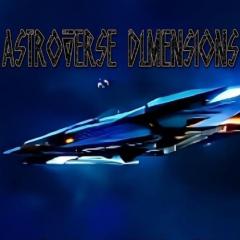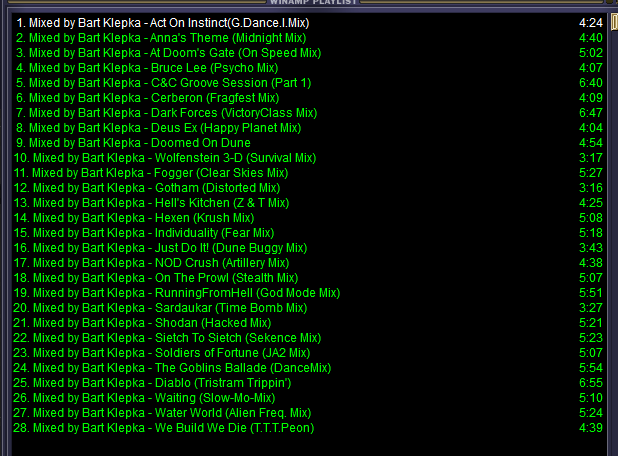All Activity
- Today
-

*NO* Secret of Mana "Serenity in the Frozen Forest"
Liontamer replied to Liontamer's topic in Judges Decisions
Hate to glom on with a quick co-sign, Luxxy, because this is an excellent theme choice, but the bros are correct on all counts, i.e. little-to-no interpretation of the source tune beyond the instrumentation changes, no dynamics/contrast, and harsh-sounding instrumentation. I hope you stick around to see what you can pick up from the community in terms of using more interpretive arrangement techniques, creating more interest and dynamics, and smoothing out some of the more grating sounds so that you retain the mood you want without it causing ear fatigue. It's a lovely Kikuta source tune, and in a vacuum, I like and appreciate the even more ambient and spacier take on the sounds, but we're looking for more substantive interpretation and personalization for people's takes on these themes. If you listen to Zeratul's "Ice Crystal Fields Forever", that's a good example of staying melodically conservative but also integrating more original supporting writing and more dynamic contrast to put more of an individual stamp on their take. There's a million ways to approach it while still retaining the overall character you're looking for with this presentation. :-) NO -

*NO* Secret of Mana "Serenity in the Frozen Forest"
paradiddlesjosh replied to Liontamer's topic in Judges Decisions
I'm well inclined to agree with proph on all points for this one. This is below our bar for arrangement purposes, being several straightforward runs through the source material without any significant changes. Relatedly, the parts themselves are all clustered in the upper octaves; this is totally valid for capturing the frozen soundscape you're looking for, but the lack of bass register elements adds to an unsettled feel. To be clear, I don't think you absolutely need a bass voice if that would compromise your vision, but I would be remiss not to mention it as a nitpick. Separately, this needs more care in the production realm. That pad that enters around the 1:00 mark is all high-frequency content and it's buzzsaw sharp, very uncomfortable to listen to. The keys that cover the source's arpeggiated chord progression have such rich overtones that they take over the soundscape: I could barely make out the additional synth at around 1:40 except for its rhythmic delay burbles. Finally, every element feels widely stereo -- I'm not hearing any issues with mono compatibility, but the lack of a defined position in the stereo image for any of the elements is a drawback for sure. What's here is a good foundation to build something truly special, but it's not there yet. We would need to hear you take some time to flesh out the arrangement with personal touches and elevate it beyond a simple loop of Kikuta's original composition before putting it up on the front page. Roll off some of the very high frequency content on that pad and your listeners will thank you; additionally, some filter and/or volume automation on that pad can keep the texture interesting. NO -
prophetik music started following *NO* Secret of Mana "Serenity in the Frozen Forest"
-

*NO* Secret of Mana "Serenity in the Frozen Forest"
prophetik music replied to Liontamer's topic in Judges Decisions
starts off sounding like a midi conversion with a lot of reverb outside of an octave jump around the end of the first phrase. there's a really uncomfortable blown/distorted feel to this opening section - truly one of the weirdest freq analysis results i've ever seen, with a flat line from 0-200hz and then a 40db jump in massive spikes in the 300+hz range. an enormous amount of overtones, and it gets worse when the pads come in before the 1:00 mark. other than that, it just keeps repeating the same material, and eventually adds a rhythmic arp. the track then just ends after the fourth or fifth repetition of the initial midi. i think that the underlying idea - a more ambient take on a classic from a killer soundtrack - works well with this particular original, because the melody's got a lot of whimsy to it. the chords as well work in a long-tail reverb soundscape as they don't have a lot that'll run into each other. but there's no development here right now - there's zero dynamics, the elements chosen are harsh on the ears, and the overall track really doesn't go anywhere. the arrangement itself can't fly here because it's literally just the midi with one or two minor things changed and then looped, so that doesn't satisfy our submission requirements around arrangement. but separately, there needs to be a lot more intentional, focused work done around ensuring that the soundscape itself is something that folks will want to grab onto and listen to. all of the best parts of this are kikuta's right now. NO -
Thanks! Very good list, though not as many Klepka's as I expected (
- Yesterday
-

OCR04959 - Oregon Trail I & II "Under a Summer Moon"
WesternZypher replied to Liontamer's topic in ReMix Reviews & Comments
Amazing! Love the fusion of aboriginal and settler themes melded harmoniously. -
@Asterbee Composing good melodies, counter-melodies, bass lines, and drums is actually relatively easy to moderately difficult. But writing interesting and harmonious chords is much more difficult and requires far more knowledge of music theory, experience, and musical imagination (but that's exactly where the great musical magic begins). For starters, it is enough to know that in the Western tonal system there are a total of 12 notes (7 root notes such as C, D, E and 5 intermediate notes such as C sharp or D sharp) that repeat themselves in several octaves. A piece of music - or at least a specific passage within it - always follows a specific key/mode, which always contains 7 different notes from the total of 12 notes within an octave. These 7 notes (also spanning octaves) are essentially the key to the musical language in a musical work. If you know this key (i.e., the key with the 7 notes), you already have a good foundation for rewriting or redesigning a composition according to your ideas without making your remix composition tonally inconsistent (finding the right rhythm is, of course, another field of musical art). This applies to virtually all components of the composition, whether melodies, bass lines, or chords, although in the case of chords, certain minimum intervals between the chord tones should be maintained (this also applies to playing across octaves, whereby in the case of tone intervals, a lower C, for example, should be treated like a higher C). While neighboring notes in a key (including notes spanning octaves, such as C1 + D2 or B2 + C4 in C major) tend to sound harsh and dissonant as chord tones, the 1st, 3rd, and 5th or, for that matter, the 2nd, 4th, and 7th notes within the key tend to sound more harmonious. ... So let's assume that a piece of music is in the key of G major. This key contains the following 7 notes: 1) G (1st note of a key = root note or tonic) 2) A 3) B 4) C (4th note of a key = subdominant) 5) D (5th note of a key = dominant) 6) E 7) F# The tonic, subdominant, and dominant can be used to create interesting chord progressions, each of which fulfills different musical functions. Tonic (1)= like a cozy home Subdominant (4) = you're on your way to adventure Dominant (5) = tension builds A typical chord progression is, for example: I - Tonic (1st note of the respective key) II - Subdominant (4th note of the respective key) III - Dominant (5th note of the respective key) IV - Tonic (1st note of the respective key) So, in the case of G major, a chord progression could look like this: I >>> G + B + D (feel free to play 16 times in a row with a bit of groove and varying dynamics) II >>> C + E + G (again 16 times) III >>> D + F# + A (again 16 times) IV >>> G + B + D (this time only 15 times, slowing down gradually, and on the 16th time, play the 3 notes one after the other to finish and add the root note D an octave higher as the 4th note). ... This is just a rough, hopefully helpful introduction based on practical examples.
-
Now it seems to be working properly. Only two messages are displayed, stating that the file is too large to preview and and too big for Google Drive to scan for viruses (but I checked - stuff seems to be safe ;)). By the way... What exactly are sound fonts (are they just sound effects without the music in a game)? How exactly do you open and use them (somehow via a DAW as a kind of extended sound pool of audio files)? I've never really looked into this kind of stuff before. But it sounds like an interesting opportunity for creating retro-style video game remixes. ))
-
 Master Mi reacted to a post in a topic:
I made some game soundfonts
Master Mi reacted to a post in a topic:
I made some game soundfonts
-
Hmm, if Japanese composers were to write an American national anthem, they might even incorporate some influences from the often-forgotten Native Americans, the original inhabitants of the vast and free lands on the western continents... ... whether in the Street Fighter style: ... or rather in the Final Fantasy style: I'm sure I'd love it. )))
-
 Master Mi reacted to a post in a topic:
This Guile's Theme should really become the new anthem of the USA
Master Mi reacted to a post in a topic:
This Guile's Theme should really become the new anthem of the USA
-

It's Okay to Change Some Notes From the Original Song?
Master Mi replied to Asterbee's topic in General Discussion
@Asterbee That is precisely the charm of a remix or arrangement. Creating a sometimes completely new soundscape that still carries the character of the original at its heart. This is true artistry, requiring the appropriate skills, experience and sensitivity to do justice to such matters. -
 Master Mi reacted to a post in a topic:
It's Okay to Change Some Notes From the Original Song?
Master Mi reacted to a post in a topic:
It's Okay to Change Some Notes From the Original Song?
-
enjoy y'all https://williamjacksn.github.io/ocremoved/
-
LCStark joined the community
-
RJ Van Xetten started following Chimpazilla
-
RJ Van Xetten started following Liontamer
-
Torick joined the community
-
Sorry if boomer bumping is not welcome, just wanted to know if there's way to get all the Bart's OC remixes? I have 28 files I downloaded way back in 2000 which I regularly rotate in my Winamp, and would like to complete my collection.
-
Seth Skoda started following Sonic 3 - "Sugar Water" (Hydrocity Zone Act 2)
-
Source: What I got so far. Was going for "Suga Suga" by Baby Bash feel but ended up closer to a new jack swing vibe. Oops. Sugar Water (S3 Hydrocity) [DEMO].mp3
-
T.O. Bassett joined the community
-

*NO* Dragon Ball Z: Budokai "Saiyan Rock!"
Hemophiliac replied to Liontamer's topic in Judges Decisions
Yeah this is generative AI of some form. It has the typical lossy sound, background elements are unclear, 19-20kHz hard brickwall. No reason to waste time saying anything else aside from, DO NOT SUBMIT GENERATIVE AI. Only submit your own work. NO -
Would be funny to have a Japanese composer make the national anthem for the US, though the French did give us the statue of liberty. America probably doesn't deserve that level of national anthem currently, but I'd be down. Really good remix. Also, I enjoy seeing all those old school sf anime scenes on the ken remix. Reminds me -- I watched most of the Street Fighter II V anime a few years back since I only got see the some of the episodes that were at blockbuster when I was a kid, and that was a really fun anime. And yeah, definitely some inspiring stoic and 90s patriotic vibes throughout the Street Fighter series.
-

It's Okay to Change Some Notes From the Original Song?
DarkeSword replied to Asterbee's topic in General Discussion
No rules against it. This is a very valid way to interpret and arrange. - Last week
-
Has anyone here managed to succeed in this area? It undoubtedly seems to be the most difficult aspect of composition. Creating good melodies that are engaging and not repetitive/forgettable seems to be an increasingly rare compositional skill, as we don't see many games nowadays with memorable music that isn't just generic chord progressions.
-

It's Okay to Change Some Notes From the Original Song?
Asterbee posted a topic in General Discussion
I've noticed that even the most experienced remixers, even the ones with millions of views, seem hesitant to alter the original work too much. I'm not referring to reimagining the music or arranging it in a completely different style. I'd say just changing a few notes, rhythms, or adding a few phrases, without much reason, simply because I think it would sound better (in very repetitive measures, for example, I'd like to add some motivic and rhythmic variation). Is there any rule against this? I mean, I feel a bit like I'm disrespecting the original work (especially since I'd like to make changes specifically to parts I don't like or think could be improved). Perhaps this could be interpreted as "wanting to be better than the original? -

*NO* Dragon Ball Z: Budokai "Saiyan Rock!"
pixelseph replied to Liontamer's topic in Judges Decisions
It's a pretty convincing rearrangement until about 2:30 in, where the incredibly lossy cymbal work and some very smeared chords between the guitars and keys reveals that this was generated with AI tools, very likely Suno. Such smearing is present throughout the track, although it's not obvious until the 2:30 mark. Please read the posting guidelines thoroughly before submitting again - we do not, and will never, allow generative AI works on the site. NO -

*NO* Dragon Ball Z: Budokai "Saiyan Rock!"
prophetik music replied to Liontamer's topic in Judges Decisions
i wrote a nice recap of the song, but i got a weird vibe from the submission email and subsequently from the staticky cymbals and low-poly guitar. the noodly way that the melody was extended caught me off guard too. i wasn't going to pass it anyways due to sound quality concerns, but just in case, i did some checking and it looks like this was generated using Suno 4.5+. so i'm going to extra-NO this. i know the submission page specifically states no generative AI and that wasn't followed here, but i'd encourage you to read our submission standards if you've got questions beyond that. NO -
ArikXu_Hugo changed their profile photo
-
Update #6 was sent to everyone. Check your PMs if you haven't yet, folks.
-
Hi i changed the sharing settings to "Anyone having the link" something like that because it was on "Limited" by default so it should work now. https://drive.google.com/file/d/1dS_OnpSZz8LngkLgRd-d2ORHb-6KyRzO/view?usp=sharing
-

OCR04952 - Donkey Kong Country 2 "Rigging Rampage"
Geoffrey Taucer replied to Liontamer's topic in ReMix Reviews & Comments
The source is honestly either my favorite or second-favorite on the entire OST, and you've definitely done it justice -

OCR04732 - Pokémon SoulSilver Version "Gold Soul"
Geoffrey Taucer replied to Liontamer's topic in ReMix Reviews & Comments
An unfortunate side effect of everything moving to youtube, discord, and social media, I guess. -
 timaeus222 reacted to a post in a topic:
Has something happened to the OC Remix website?
timaeus222 reacted to a post in a topic:
Has something happened to the OC Remix website?
-

OCR04727 - Final Fantasy VIII "Beyond the Shores"
Estrang replied to Liontamer's topic in ReMix Reviews & Comments
Super amazing singing!! 😎








